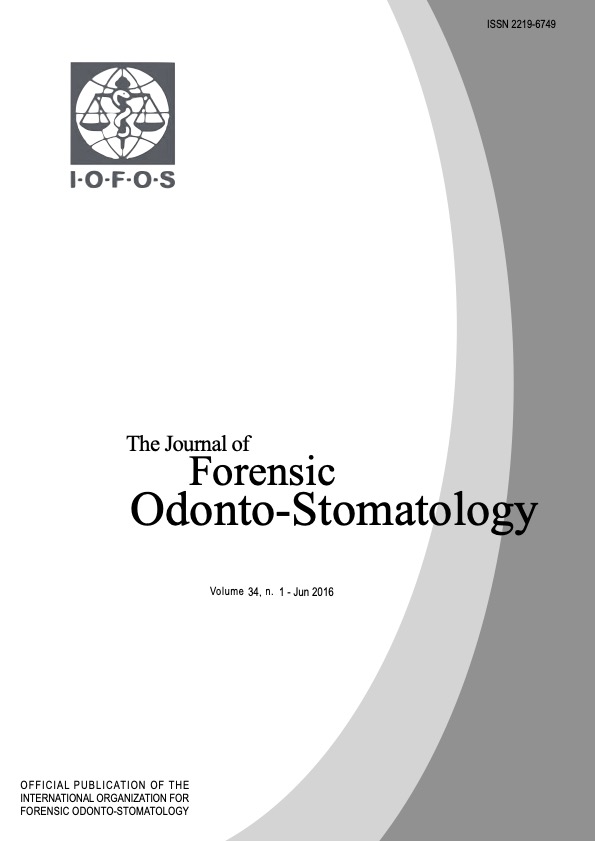Behavior In Vitro Of The Dentin-Enamel Junction In Human Premolars Submitted To High Temperatures: Prediction Of The Maximum Temperature Based On Logistic Regression Analysis
Keywords:
Forensic Science, Forensic Odontology, Dental Tissues, Dentine-enamel Junction, High Temperatures, Medico-legal DocumentationAbstract
Objective: The aim of the study was to provide scientific evidence that would permit DEJ separation to be used as a parameter to estimate the temperature to which burnt, carbonized or incinerated cadavers or human remains had been subjected. Materials and methods: A descriptive pseudo- experimental study was carried out in vitro using cone beam tomography to determine the physical behavior of the dentine-enamel junction in 60 human premolars submitted to high temperatures (200°C, 400°C, 600°C, 800°C and 1000°C). Results: Spearman’s concordance and correlation index was used to determine the relationship between longitudinal separation of the dentine-enamel
junction (mm) and temperature (°C) and a simple linear regression model developed to show that once micro- and macrostructural changes are initiated in the enamel and dentine. Conclusions: The dentine-enamel junction begins to separate from the cervical towards the occlusal as temperature increases.

